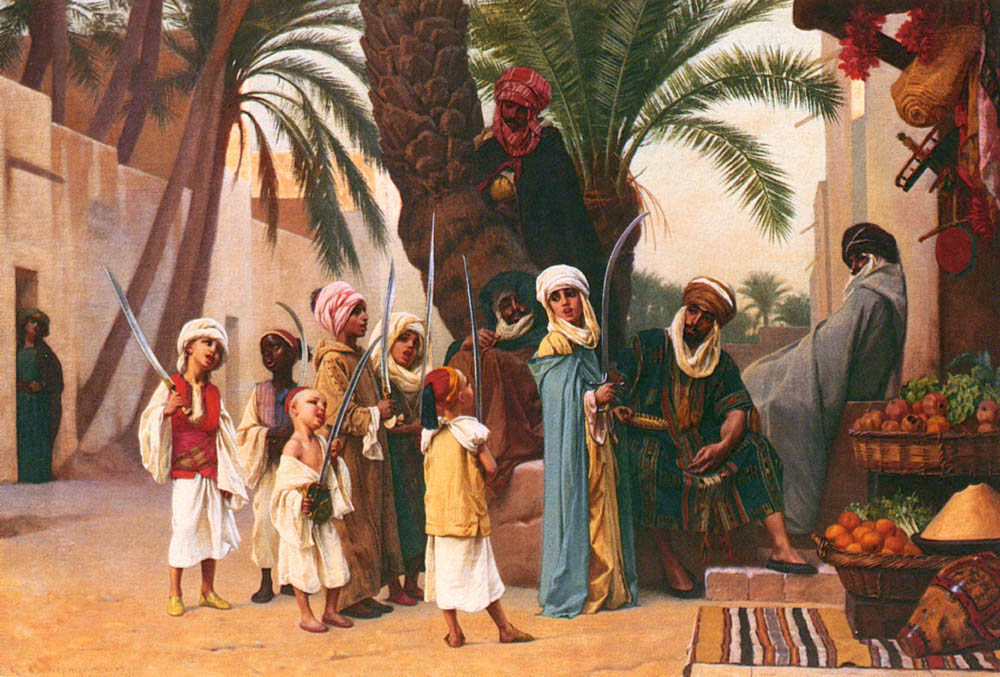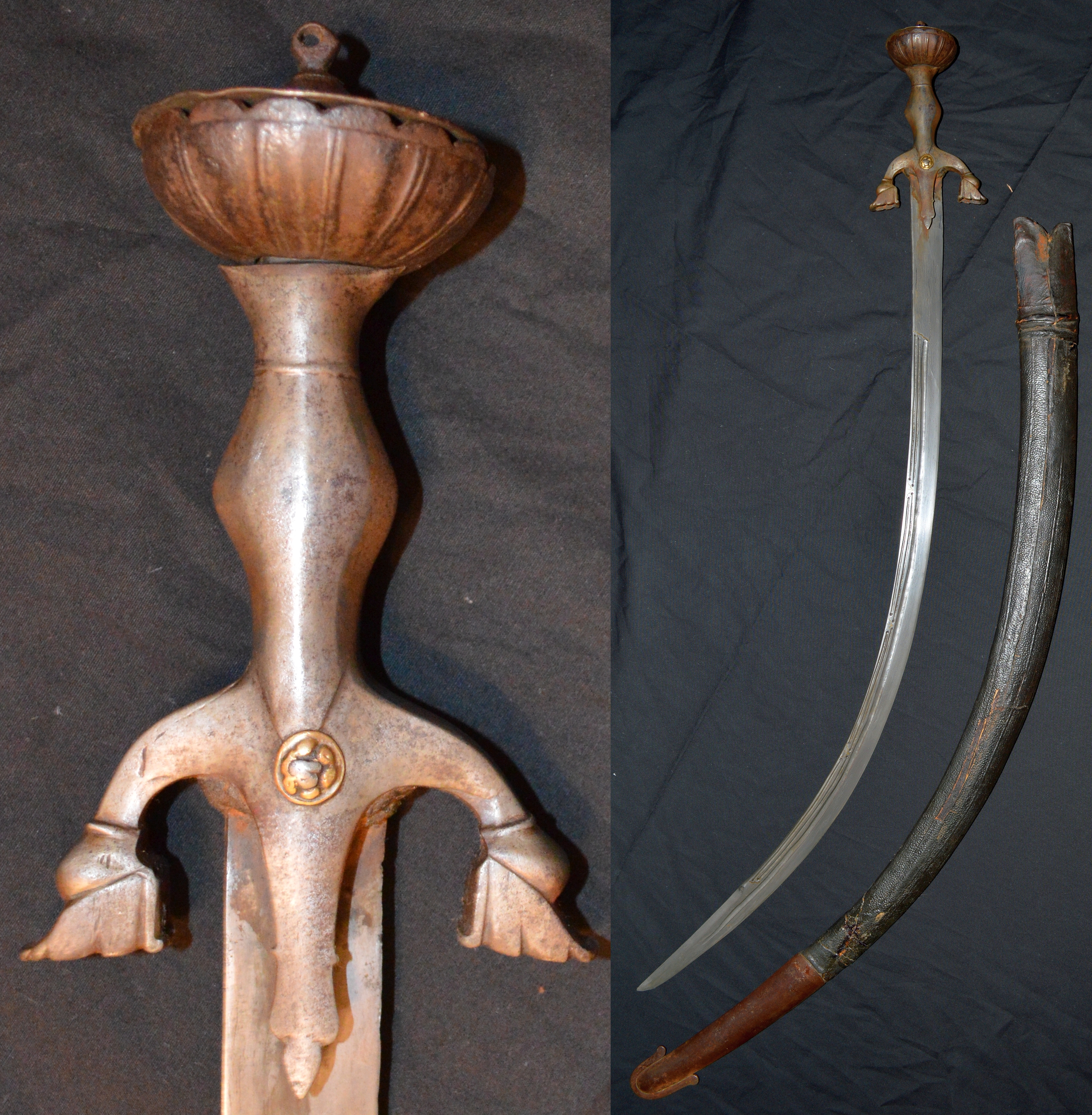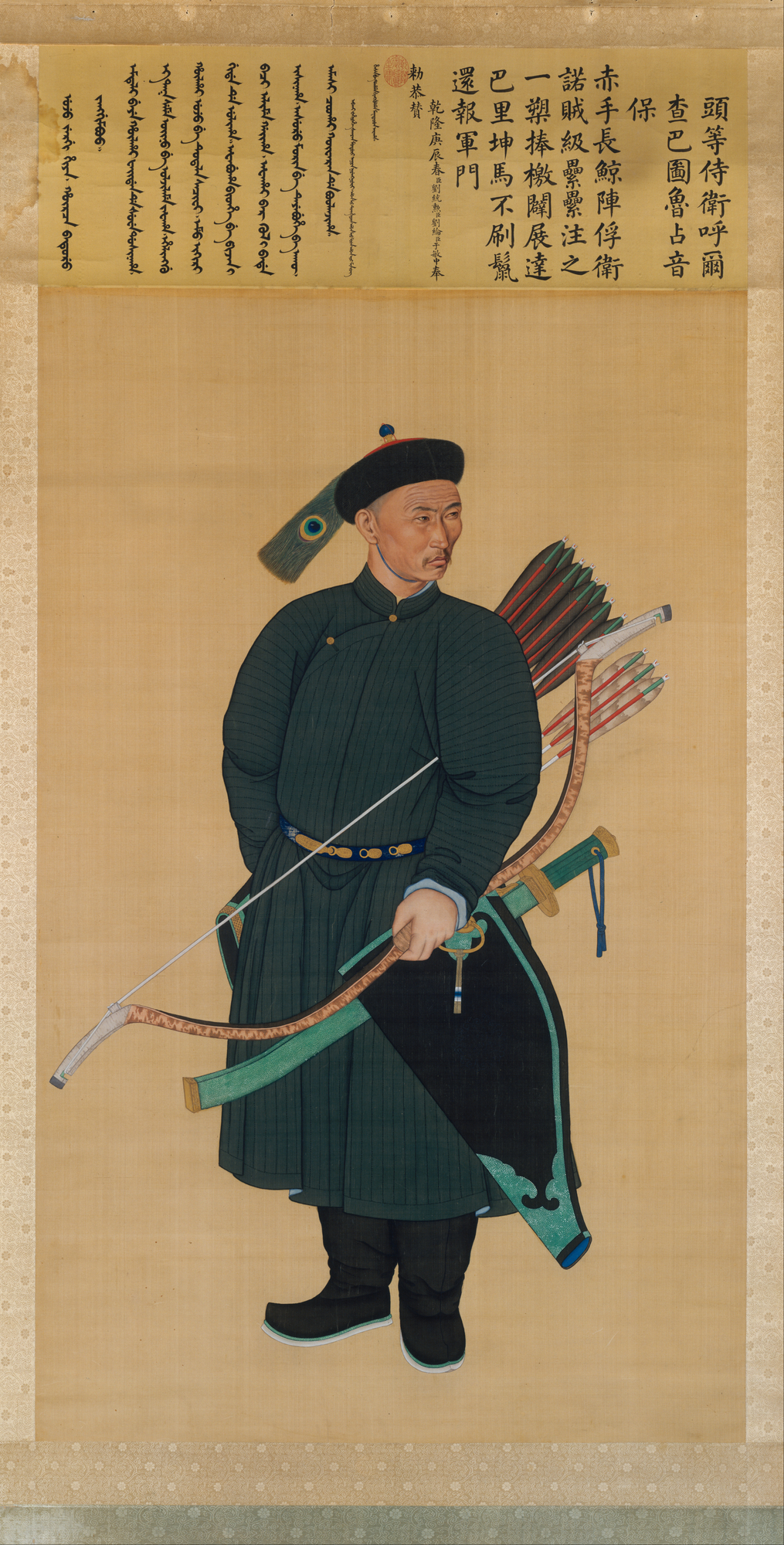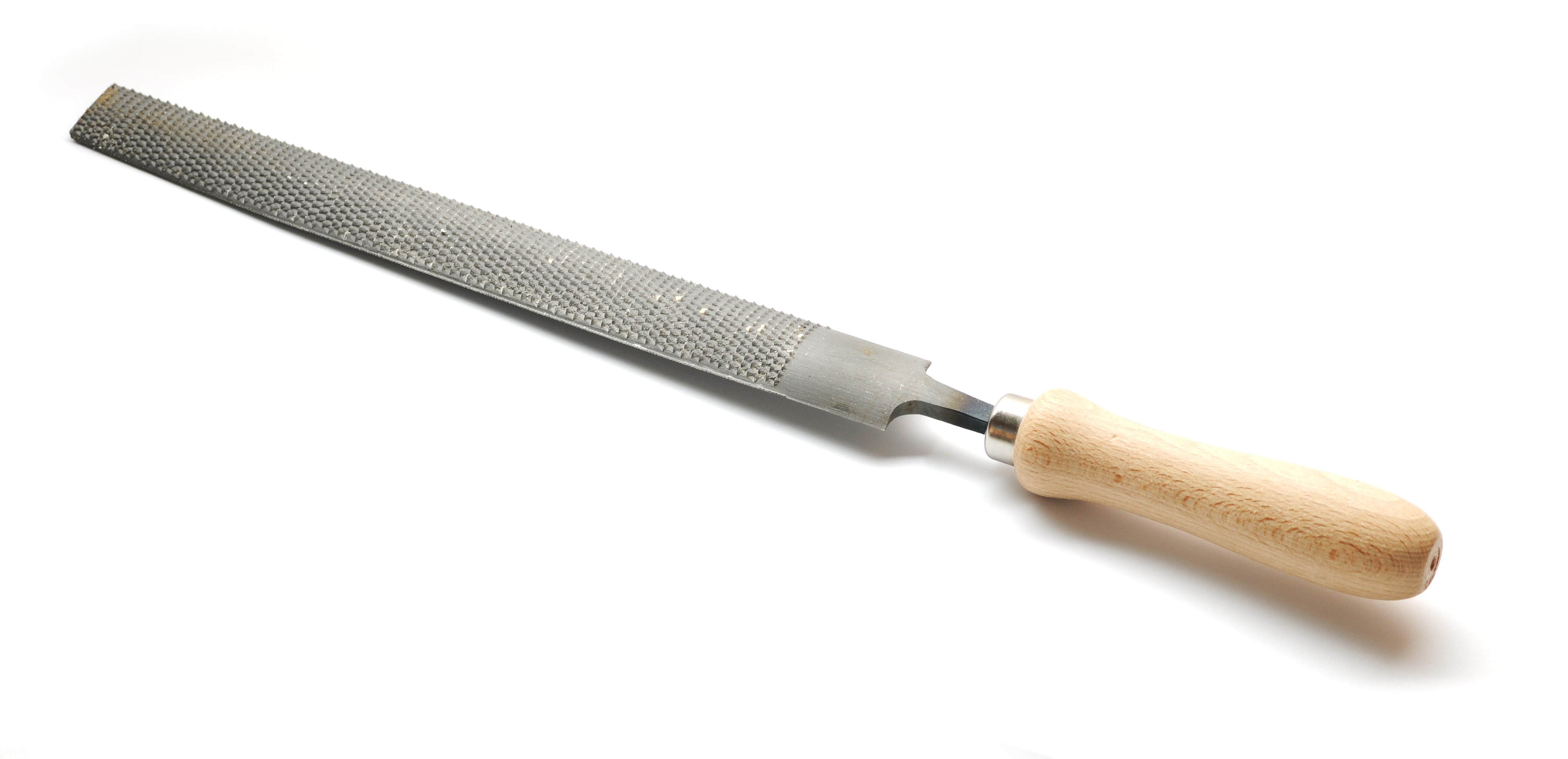|
Shamshir
A shamshir () is a type of Persian/Iranian sword with a radical curve. The name is derived from the Persian word ''shamshīr'', which is made of two words ''sham'' ("fang") and ''shir'' ("lion"). The curved " scimitar" sword family includes the shamshir, kilij, talwar, pulwar, and nimcha. A ''shamshir shekargar'' () is the same as a ''shamshir'', except the blade is engraved and decorated, usually with hunting scenes. Description Originally, Persian swords were straight and double edged. Curved sabre blades were Central Asian in origin. There is considerable disagreement between historians as to when these curved blades were first introduced from Central Asia into Persia, and over what period they became adopted and modified into the recognizable Shamshir. Curved blades began to appear in Persia in the 9th century, when these weapons were used by soldiers in the Khorasan region of Central Asia but were not widely adopted. The sword now called a "shamshir" was developed in ... [...More Info...] [...Related Items...] OR: [Wikipedia] [Google] [Baidu] |
Scimitar
A scimitar ( or ) is a single-edged sword with a convex curved blade of about 75 to 90 cm (30 to 36 inches) associated with Middle Eastern, South Asian, or North African cultures. A European term, ''scimitar'' does not refer to one specific sword type, but an assortment of different Eastern curved swords inspired by types introduced to the Middle East by Central Asian ghilmans (enslaved soldiers). These swords include the Persian '' shamshir'', the Arab '' saif'', the Indian '' talwar'', the North African '' nimcha'', the Turkish '' kilij'', and the Afghan '' pulwar''. All such swords are originally derived from earlier curved swords developed in Turkic Central Asia ( Turkestan). Etymology The English term ''scimitar'' is attested from the mid-16th century and derives partly from the Middle French ''cimeterre'' (15th century) and partly the Italian ''scimitarra''. The ultimate source of these terms is possibly corruptions of the Persian '' shamshir,'' however this is still d ... [...More Info...] [...Related Items...] OR: [Wikipedia] [Google] [Baidu] |
Talwar
The talwar (), also spelled talwaar and tulwar, is a type of curved sword or sabre from the Indian subcontinent. Etymology and classification The word ''talwar'' originated from the Sanskrit Language, Sanskrit word ''taravāri'' () which means "one-edged sword". It is the word for ''sword'' in several related languages, such as Hindustani language, Hindustani (Hindi and Urdu), Nepali language, Nepali, Marathi language, Marathi, Gujarati language, Gujarati, Punjabi language, Punjabi, etc. and as () in Bengali language, Bengali. Like many swords from around the world with an etymology derived from a term meaning simply 'sword', the talwar has in scholarship, and in museum and collector usage, acquired a more specific meaning. However, South Asian swords, while showing a rich diversity of forms, suffer from relatively poor dating (so developmental history is obscure) and a lack of precise nomenclature and classification. The typical talwar is a type of sabre, characterised by a c ... [...More Info...] [...Related Items...] OR: [Wikipedia] [Google] [Baidu] |
Kilij
A kilij (from Turkish language, Turkish ''kılıç'', literally "sword") is a type of one-handed, single-edged and curved scimitar used by the Seljuk dynasty, Seljuk Empire, Timurid Empire, Mamluk Empire, Ottoman Empire, and other Turkic khanates of Eurasian steppes and Turkestan. These blades developed from earlier Turko-Mongol sabers that were in use in lands controlled or influenced by the Turkic peoples. History Etymology Most of Turkology, Turkologists and linguists including Ahmet Bican Ercilasun, Bican Ercilasun and Sevan Nişanyan think that it is derived from the Turkic root ''kıl-'' which means "to forge" or "to smith", with the diminutive suffix ''-ıç'' which creates ''kıl-ıç'' (roughly "ironwork", i.e. "sword"). Also one of the earliest mentions of the word was also recorded as (, an Old Turkic phrase from the Orkhon Inscriptions which was erected in 735 AD) in the age of Göktürk Khaganate, Turkic Khaganate, instead of the other suggested Old Turkic rec ... [...More Info...] [...Related Items...] OR: [Wikipedia] [Google] [Baidu] |
Pulwar
The pulwar or pulouar () is a single-handed curved sword originating in Afghanistan. Origin The pulwar originated alongside other scimitar-type weapons such as the Arab Arab sword, saif, the Persian shamshir, the Turkish kilij, and the Indian talwar, all of them ultimately based on earlier Central Asian swords. Originally, the Khyber Knife (a type of short sword) served as the weapon of the common people while upper-classes could afford to import swords from neighbouring Persia and India. Over time, the Afghans combined characteristics of the imported swords and adapted it to create the pulwar. Most existing pulwars date back to the early 19th century. Characteristics Borrowing features from the swords of neighboring lands, the pulwar may be described as an Afghan version of the Indian talwar. Pulwar blades tend to be more elaborately fuller (weapon), fullered than those of the talwar. Some pulwar hilts were fitted to Iran, Persian blades which are slimmer and more curved and ta ... [...More Info...] [...Related Items...] OR: [Wikipedia] [Google] [Baidu] |
Turko-Mongol Sabers
The Turco-Mongol sabre, alternatively known as the Eurasian sabre or nomadic sabre, was a type of sword used by a variety of nomadic peoples of the Eurasian steppes, including Turkic peoples, Turkic and Mongols, Mongolic groups, primarily between the 8th and 14th centuries. One of the earliest recorded sabres of this type was recovered from an Pannonian Avars, Avar grave in Romania dating to the mid-7th century. Although minor variations occur in size and hilt, they are common enough in design across five centuries that individual blades are difficult to date when discovered without other context. These swords were likely however, already influenced by swords used by others, such as the various Chinese swords. These swords measured between in blade length and bore a gentle curve, leading to a pointed tip useful for thrusting. They were designed for use on cavalry, horseback and neighboring peoples frequently encountered these blades at the hands of Turkic raiders. A common fe ... [...More Info...] [...Related Items...] OR: [Wikipedia] [Google] [Baidu] |
Arab Sword
The saif (), sometimes called a shamshir (from ), depending on the era, originated in Arabia before the 7th century. Little is known about this weapon besides what Al-Kindi wrote in his treatise ''On Swords'' in the 9th century. Description In the article "Introduction to the Study of Islamic Arms and Armour", A. Rahman Zaky says the saif is "[a]n Arab sword, [with] a rather broad blade and sometimes with a peculiarly hooked pommel. The size varies greatly. It is found in most countries in which the Arabs have lived, and each has its own variety. Early Arab chroniclers used to mention two kinds of swords: Saif Anith, which was made of iron, and Saif Fulath or Muzakka, which was made of steel." Etymology ''Saif'' is an Arab word for swords in general, not a certain type. The term ''xiphos'', Greek for a double-edged straight sword, may be related to ''saif''. Anatomy The handle is the ''miqbad''; the pommel, ''halq''; and the quillon, ''haris''. The blade is composed of the fa ... [...More Info...] [...Related Items...] OR: [Wikipedia] [Google] [Baidu] |
Mameluke Sword
A Mameluke sword is a cross-hilted, curved, scimitar-like sword historically derived from sabres used by Mamluk warriors of Ottoman Egypt after whom the sword is named. Egypt was, at least nominally, part of the Ottoman Empire and the sword most commonly used in Egypt was the same as used elsewhere in the empire, the kilij. The curved sabre was originally of Central Asian Turkic in origin from where the style migrated to the Middle East, Europe, India and North Africa. In Anatolia and the Balkans the sabre developed characteristics that eventually produced the Ottoman kilij. It was adopted in the 19th century by several Western militaries, including the French Army, British Army, Royal Sardinian Army, Royal Italian Army and the United States Marine Corps. Although some genuine Ottoman sabres were used by Westerners, most "mameluke sabres" were manufactured in Europe or America; their hilts were very similar in form to the Ottoman prototype, but their blades tended to be longer, ... [...More Info...] [...Related Items...] OR: [Wikipedia] [Google] [Baidu] |
Acinaces
The acinaces, also transliterated as akinakes ( Greek ) or akinaka (unattested Old Persian ''*akīnakah'', Sogdian ''kynʼk'') is a type of dagger or xiphos (short sword) used mainly in the first millennium BCE in the eastern Mediterranean Basin, especially by the Medes, Scythians, Persians and Caspians, then by the Greeks. The acinaces, of Scythian origin, but made famous by the Persians, rapidly spread throughout the ancient world. The Romans believed that this weapon originated with the Medes. The acinaces is typically in length and double-edged,Blair, Claude and Tarassuk, Leonid, eds. (1982). ''The Complete Encyclopedia of Arms and Weapons''. p.17. Simon & Schuster. . and although there is no universal design, the guard may be lobed with the hilt resembling that of a bollock dagger, or the pommel may be split or of the "antenna" type. The scabbard – as much as anything else – defines the acinaces, and usually has a large decorative mount near the opening, allow ... [...More Info...] [...Related Items...] OR: [Wikipedia] [Google] [Baidu] |
Wootz Steel
Wootz steel is a crucible steel characterized by a pattern of bands and high carbon content. These bands are formed by sheets of microscopic carbides within a tempered martensite or pearlite matrix in higher-carbon steel, or by ferrite and pearlite banding in lower-carbon steels. It was a pioneering steel alloy developed in southern India in the mid-1st millennium BC and exported globally. History Wootz steel originated in the mid-1st millennium BC in India, wootz steel was made in Golconda in Telangana, Karnataka, Tamilnadu and Sri Lanka. The steel was exported as cakes of steely iron that came to be known as "wootz". The method was to heat black magnetite ore in the presence of carbon in a sealed clay crucible inside a charcoal furnace to completely remove slag. An alternative was to smelt the ore first to give wrought iron, then heat and hammer it to remove slag. The carbon source was bamboo and leaves from plants such as Avārai. Locals in Sri Lanka adopted the productio ... [...More Info...] [...Related Items...] OR: [Wikipedia] [Google] [Baidu] |
Folk Etymology
Folk etymology – also known as (generative) popular etymology, analogical reformation, (morphological) reanalysis and etymological reinterpretation – is a change in a word or phrase resulting from the replacement of an unfamiliar form by a more familiar one through popular usage. The form or the meaning of an archaic, foreign, or otherwise unfamiliar word is reinterpreted as resembling more familiar words or morphemes. The term ''folk etymology'' is a loan translation from German ''Volksetymologie'', coined by Ernst Förstemann in 1852. Folk etymology is a productive process in historical linguistics, language change, and social interaction. Reanalysis of a word's history or original form can affect its spelling, pronunciation, or meaning. This is frequently seen in relation to loanwords or words that have become archaic or obsolete. Folk/popular etymology may also refer to a popular false belief about the etymology of a word or phrase that does not lead to a change in t ... [...More Info...] [...Related Items...] OR: [Wikipedia] [Google] [Baidu] |
Tang (tools)
A tang or shank is the back portion of the blade component of a tool where it extends into stock material or connects to a handle – as on a knife, sword A sword is an edged and bladed weapons, edged, bladed weapon intended for manual cutting or thrusting. Its blade, longer than a knife or dagger, is attached to a hilt and can be straight or curved. A thrusting sword tends to have a straighter ..., spear, arrowhead, chisel, file, coulter, pike, scythe, screwdriver, etc. One can classify various tang designs by their appearance, by the manner in which they attach to a handle, and by their length in relation to the handle. ''Nakago'' is the term in Japanese, used especially when referring to the tang of the katana or the wakizashi. Full vs partial tang A full tang extends the full length of the grip-portion of a handle, versus a ''partial'' tang which does not. A full tang may or may not be as wide as the handle itself, but will still run the full length of ... [...More Info...] [...Related Items...] OR: [Wikipedia] [Google] [Baidu] |




